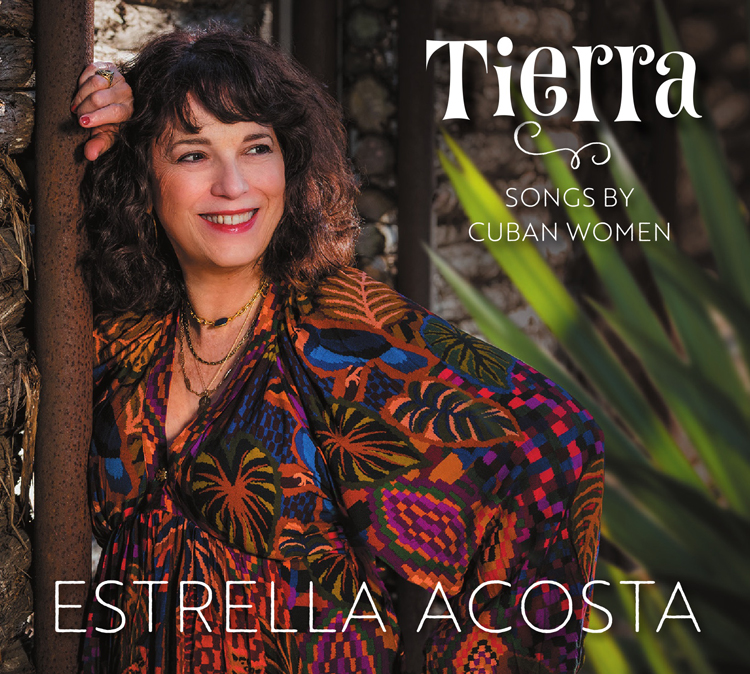Estrella Acosta – Tierra – Songs by Cuban Women (eStar, 2023)
Tierra – Songs by Cuban Women presents the soulful and delightful vocals of Netherlands-based Cuban singer Estrella Acosta. Using irresistible rhythms, sometimes intertwined and fused, from Cuba and Hispanic America, along with jazz arrangements, Acosta celebrates female Cuban songwriters as well.
Significantly, Tierra shines a spotlight on the female songwriters of the Cuban countryside. Acosta selected a mix of songwriters from the past as well as current lyricists. One of the great historical figures is Radeunda Lima, who appeared in the Cuban scene in the 1930s. She wrote the song “Mi Tierra es Así.” The rhythm here is what the band calls merensongo, a mix of Cuban songo and Dominican merengue.
Next, Irina González is an example of the younger generation of Cuban songwriters. Her song is titled ‘Guajira” and it refers to the women of Cuba’s countryside as well as a musical genre. This time, the amalgamated genre is guajira jazz.
Tierra includes original works as well. For instance, Estrella Acosta wrote “Ay Amor.” Chiefly, it brings together son cubano, punto cubano and a décima she wrote for her mother. Particularly, the poetic form décima (a type of poetry found in Hispanic America and in Spain that is octosyllabic and has 10 lines to the stanza) plays an important role within Cuban rural music.
“Amor de millones” was written by Sara González. In this case, the style is a changüí-son, a mix of two Cuban genres, changüí and son cubano.
Acosta wrote “Fontanar,” a song that refers to the wonderful memories of Estrella’s youth in Fontanar, a lush tropical area outside Havana. To illustrate this feeling, the ensemble performs a mixture of Venezuelan gaita and joropo in combination with Cuban bembé.
“Guasimal” is another Acosta original. For this instance, Estrella used a poem written by her mother after she and her brother made a trip to Guasimai, the farm where they were born. It is a son cubano dedicated to her maternal side of the family, the Triana and Yanes families.
Lastly, the album ends with “Que Viva Chango” by Celina González, known as the queen of [Cuban] country music. This Afro-Cuban flavored song uses a guagancó rhythm.
Although I really enjoyed Estrella Acosta’s vocal work and the captivating rhythms from Cuba, Venezuela, and elsewhere throughout the album, I found the constant saxophone to be too busy and distracting, overshadowing the vocals and other instruments.
Musicians: Estrella Acosta on vocals; arranger Marc Bischoff on piano; Samuel Ruiz on bass; Enrique Firpi on drums; Efraim Trujillo on saxophone; Gerardo Rosales on percussion; and Alberto Caicedo on vocals.
Buy Tierra – Songs by Cuban Women.


